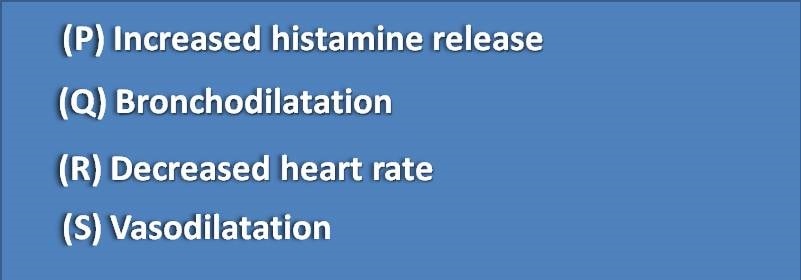- Home >
- Test papers >
MCQ on antiarrhythmic agents: Page-7

(A) P,R,S
(B) P,Q,R
(C) Q,S
(D) R,S
Adenosine acts by opening of potassium channels leading to vasodilatation, inhibition of heart resulting in bradycardia. At lungs, it mainly acts by increasing the release of histamine resulting in bronchoconstriction.
(A) Digoxin
(B) Lidocaine
(C) Verapamil
(D) Amiodarone
Lidocaine IV can be given to terminate acute ventricular tachycardia.
(A) Digoxin increases action of Quinidine due to inhibition of its excretion
(B) Digoxin increases action of Quinidine due to increasing its metabolism
(C) Quinidine increases action of Digoxin due to inhibition of its excretion
(D) Quinidine decreases action of Digoxin due to increasing its metabolism
Quinidine is a P-glycoprotein pump inhibitor at renal tubules. Normally this pump is responsible for renal tubular secretion and hence increases the excretion of drugs like digoxin. Quinidine inhibits this pump thereby decreases the excretion of the digoxin leading to increase in its action which may lead to toxicity. Therefore in presence of quinidine the dose of digoxin should be decreased.
(A) Amiodarone produces slate-grey-blue discoloration
(B) L-form of sotalol has beta blocker activity
(C) Class Ib drugs has fast association and dissociation kinetics
(D) Statins combined with fibrates are drug of choice in hyperlipidaemia
Statins should not be combined with fibrates due to rhabdomyolysis
(A) Congestive heart failure, digoxin
(B) Wolf-Parkinson-white syndrome, amiodarone
(C) Type II hypercholesterolemia, statins
(D) Supraventricular tachycardia, Phenytoin
For supraventricular tachycardia, adenosine is the drug of choice.